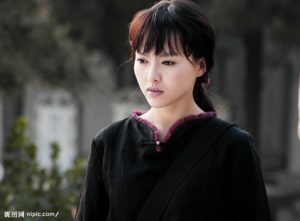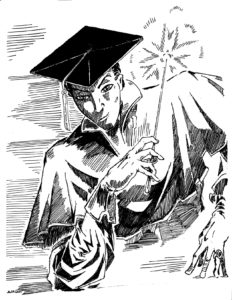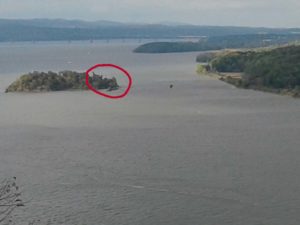HOW ROANOKE CAME TO BE — PART TWO
How Roanoke Came To Be, Part Two:
The difficult, difficult life of Game Rachel

In part one, you may remember that I mentioned that back when Mark Whipple was a teen, John used to run his roleplaying game on hard. So Mark had to really work to achieve anything in the game.
Mark, however, did not run the game where I was playing Rachel Griffin on hard. Mark ran Rachel on extra-hard. Perhaps, even on ultra-hard.
(Think I am exaggerating? Ask John. )
He didn’t run it on hard for John, who was playing crazy orphan boy Sigfried Smith. Or for our friend who was playing the princess of Magical Australia.

Photo used during the game for Sad Rachel
Only Rachel Griffin’s life was super, ultra, double-plus hard.
Any of you who are readers of the book version of Rachel have no idea of how truly hard things were for game Rachel—because books are short. By this I mean, only a relatively few events can happen in a book, and at the end, there needs to be a climax where the main character accomplishes something.
Book Rachel has accomplished at least as many things as there are books. Game Rachel had no such advantage. She very seldom accomplished anything. Instead, her life was a series of bad things happening to her made worse by her friends.
John was playing Sigfried, an orphan who did not care about adults in the least and constantly wanted to cause trouble or do something wild. The other player, our kids’ godfather, was playing the princess, who he played as a total rules hound, never wanting to step out of bounds about anything.

Is he evil…or good?
Rachel—and I the player—were stuck in the middle of these two, a tension that only got worse when Rachel began hanging out with fourteen year old Gaius Baltar and, occasionally Doom. An incident early in the game had convinced the Princess had decided that Doom was evil.
I remember saying what a good book this would make, with Rachel torn between her two friends and never sure who was good and who was evil.
And that was what I loved about it so much.
Playing this game was probably one of the hardest things I have ever done in my life. It was really difficult–for reasons both in game and out,–and yet, I did not give up.
Why?
To a degree, the answer to that is a mystery. Why do we keep going when something is so difficult that we can hardly bear it? Part of the answer lies in the statement above–the wonder of walking through a realm where it is not clear who is good and who is evil–and yet you are compelled to choose. Again and again, there would be some character everyone hated or distrusted: Gaius, Victor Von Doom, the Raven—whom my character would get to know, and I would decide to take a chance on. It was always terrifying, but, unlike everything else in this difficult, difficult game, it almost always paid off.
(I found out later that Mark had intended Doom and co to be our adversaries and for it to be a shock when we found out that Sandra Griffin was dating him, and then a later revelation that Doom and his group were not actually villains. Rachel falling for Gaius put an end to all that. ;- )

Aslan is on the move!
And then, just when things seemed too dark, unbearable—something wondrous would happen.
Because Aslan was on the move.
The fact that Aslan was in the game, that sometimes angels appeared–that terrible wrongs could suddenly, in the blink of an eye, go awesomely right–made the game worth playing, even when every aspect of Rachel’s life had gone wrong.
Jump ahead to summer of 2011. Rachel has now made a serious error—a really horribly serious error—that was casting everything around her into chaos. Mark has taken a hiatus from running the game. I am at the mall, shopping.
Since Mark is not running the game at the moment, and I am now utterly obsessed with trying to put Rachel’s horrible life right again, I am idly playing around with the idea of writing the story up as a book.

The wing earrings (Not a good picture)
I walked into in one of those shops that carry cheap earrings and hair ties, and, hanging on a wall at about knee level, I see these beautiful earrings that look like silver feathered wings. (This means nothing to current readers—because books take forever! But in my mind, Rachel is The Winged Girl. So, it meant something to me.) I looked at them, and the thought came to me:
Write the book.
So, I bought the earrings, and I started writing the game up as a book.
The first thing I did was pray. If I was going to write up the story, it couldn’t be just a copy of another story. It had to be its own unique work, with its own joys and its own sorrows. I prayed for the right ideas—to create a background worth of the story to be told.
By this time, the game had stopped feeling even remotely like Harry Potter. It may have taken place at Hogwarts, and grown- up auror Harry Potter occasionally came onstage, but frankly, there was more of FRINGE in the story than of Harry Potter, and even that had left behind.
The game had developed into its own story, with its own world, and its own plotline and goals for the characters that had nothing to do with the stories that the characters had originally been stolen from.
The characters, too, were mainly original, in that the eleven, fourteen, or eighteen year old versions of various book and comic book characters had become different enough from their originals to be their own people. So, as a story to write up, it was pretty close to standing on its own feet.
But, before I could start, I had to invent a totally new background.
I needed a school, a magic system, and a world, with its own history and customs. Where to start?
Several years earlier, my then ten-year-old son Orville had been studying Colonial America. He had briefly run a game where it turned out that the reason that the colony on Roanoke Island disappeared was that there was a wizard school there—so Muggles didn’t see it.
I loved this idea: a school of magic on Roanoke Island.
But I wasn’t keen on writing a novel set of the coast of North Carolina, a place I knew nothing about. So I decided that the island was a floating island and had floated around the world. But now, it was trapped in one place—so I could keep it there for the books. But where?

The south-facing slope of Storm King, overlooking the Hudson
I decided to pick a place I really loved: New York State’s Hudson Highlands.
As a child, I had been impressed with Storm King Mountain, when I saw the peak through a break in the fog while on a hiking trip near the Hudson River. Storm King is not a particularly high mountain. In fact, it is not very impressive to people who know real mountains, but it had earned its name because the peak was so often in the midst of storms.
Storm King Mountain was magical to me, so I decided that the floating Island had moored in the Hudson just beyond Storm King.

Bannerman Island from the slopes of Storm King (as seen in the other picture. The circle denotes where the castle is.
Imagine my surprise when I discovered that there was a real island there—and it had a castle on it! Even more amusing, no one was allowed to go there…except once a year in September, when there was a kayak race from the shore of the Hudson to the island.
Clearly, that was the false version the non-magical folk saw of students going to Roanoke for the coming term!
So Bannerman Island, also called Pollepel Island, became the home of my new school of magic–though Roanoke Island is much larger than Bannerman. The hidden magical part extends from the island in the picture to the left all the way down to the edge of that picture.
But what was on the island and what did the school look like?
For that, we must wait for Part Three: Roanoke Academy comes to life!

Leave a comment